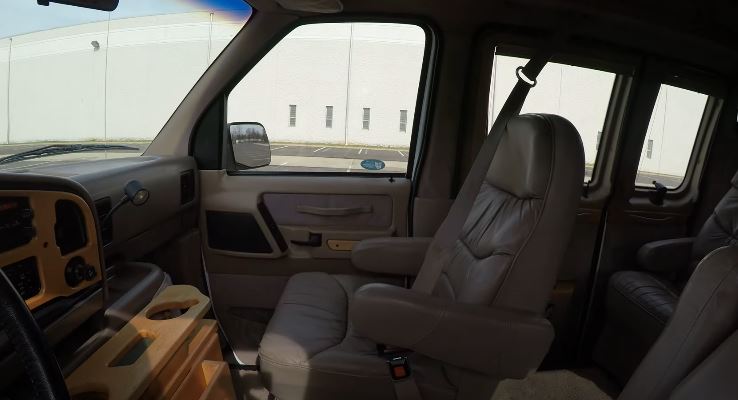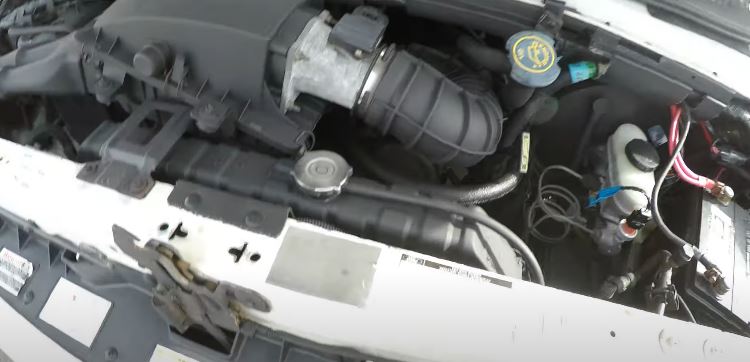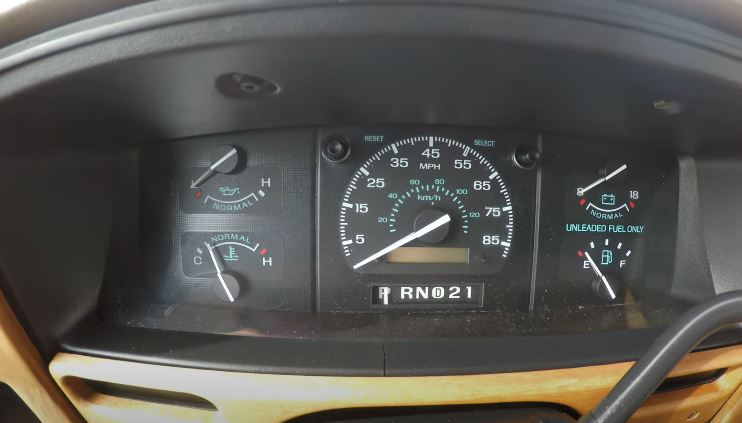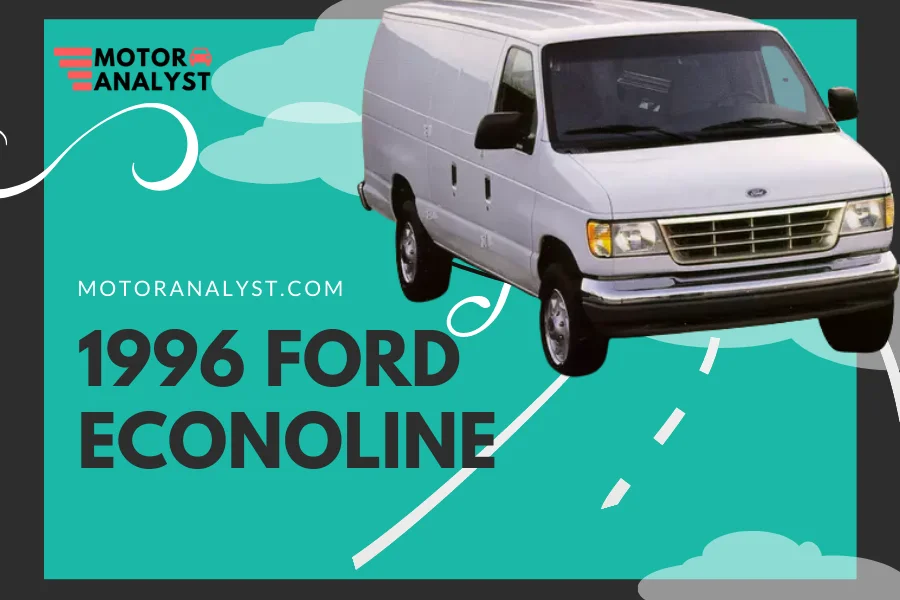The fourth generation of the Ford automobiles included the 1996 Ford Econoline. The third-generation powertrain was mainly retained, but the exterior and interior were completely redesigned. The vehicle has undergone multiple alterations during its development, the most recent of which occurred in 2021.
The E-Series trucks shared many features with the F-Series pickups, keeping the back wheel with the Ford vehicle’s front axle. Larger brakes, enhanced steering, avalanche stability control, and a greater GVWR were all added to increase performance and safety. The Ford Club Wagon was only available as a passenger van, while the Econoline was a freight van and a customer van (Econoline Wagon). So, these extra alterations in the 1996 Ford Econoline are shown here for your information.
1996 Ford Econoline: Overview
If you prefer driving wagons or vans, the 1996 Ford Econoline is an excellent choice. It comes in various trimmings, giving you a wide range of options. The attributes of the 1996 Ford Econoline E-250 that make it the most refined choice are listed below.
| Engine Type | Gas |
| Drive Type | Rear-wheel drive |
| Combined MPG | 12 mpg |
| Transmission | 3-speed automatic |
| Cylinders | Inline 6 |
1996 Ford Econoline: Exterior
| Curb Weight | 4,677 lbs. |
| Maximum Payload | 2,125.0 lbs. |
| Length | 211.8 in. |
| Overall Width Without Mirrors | 78.3 in. |
| Height | 80.7 in. |
| Bumpers | black / colored / chrome |
| Rear Bumper | argent |
| Bodyside Moldings | black |
| Paint | clearcoat |
| Grille Moldings | chrome |
| Exterior Mirrors | dual manual / dual power remote |
1996 Ford Econoline: Interior

When looking for an interior for this available rim for the vehicle, you cannot get that must difference in the fourth-generation models. However, the interior of the vehicle generally remained colored black or vinyl. It used rubber mats in the floor to carpet and vinyl texture for Front and rear seats.
Nevertheless, no such safety features like Front or side airbags, car navigation systems, automated rearview cameras were introduced in the model. But, it had a sound HVAC system with exterior mirrors of good quality. Above all, cruise control system, power automated locking system, AM/FM stereo for entertainment, and heaters are some of its excellent interior features.
1996 Ford Econoline: Engine

| Base Engine Size | 4.9 l |
| Horsepower | 145 hp @ 3,400 rpm |
| Torque | 265 lb.-ft @ 2,000 rpm |
| Fuel Tank Capacity | 35.0 gal. |
| Fuel Type | Regular unleaded |
| Battery | 72 amp |
| Alternator | 95 amp |
1996 Ford Econoline: Towing Capacity
when you are discussing different engine features for the vehicle, mentioning the vehicle’s towing capacity is essential. With a 4.9 L engine, this vehicle comes with a towing capacity of 4900 Lbs. However, you need to have a good axle ratio to maintain this rate of towing capacity. Here, the axle ratio is in the ratio of 3.73:1.
1996 Ford Econoline: Trim
1996 Ford Econoline E-350
On all designs except Club Wagon and RV versions, Ford’s full-size vans get minor updates, including Anti-theft is removed from the intelligent home security system, and the under-hood light is removed. 15-inch wheel coverings are available on all versions, and color options include Deep Violet, Toreador Red, Light Saddle, and Medium Wedgewood Blue.
| Engine Type | Gas |
| Cylinders | Inline 6 |
| Transmission | 3-speed automatic |
| Curb Weight | 4,680 lbs. |
| Drive Type | Rear-wheel drive |
| Horsepower | 205 hp @ 3,800 rpm |
| Torque | 328 lb.-ft @ 2,200 rpm |
You get a slight change in the working of the 4.9L rear-wheel drive engine, which produces changes in power. Other than that, you could merely distinguish the difference in its dimensions. Above all, most of its consumers scaled 4.0 upon 5.0 based on its different functional parts.
Recommended Reading | Ford Econoline 2002: Overview on Trims and Specifications
1996 Ford Econoline: Reviews and Ratings

Econoline’s reviews are divided into several categories, including engine, spaciousness, reliability, appearance, functionality, brakes, comfort, transmission, and others. According to studies, the technology available at the car’s manufacture made it the most widely distributed vehicle. It used the most up-to-date technologies at the time, which raised awareness. Currently, the vehicle’s ratings are also listed on a range of 4.3 to 5.
Above all, the consumers provided many positive reviews like:
- Excellent and easy maintenance
- Good mileage
- Available replacement parts
- Plenty of power
- Good and sober interior décor
1996 Ford Econoline: Problems and Troubleshoot
The engine that isn’t running smoothly
If your engine is sluggish to start and misfires when you accelerate, the ignition circuits and ignition coil pads are most likely to blame. Only replacement is a possible choice in this situation. The replacement costs of the ignition coil arrangement range from $140-$200.
Leakage of Coolant from the Heater Core
The coolant’s electrolysis can lead to erosion and degradation of the heater base and radiators fittings. The heater core can be replaced for $200-$300. Adding anchor bands on top can help keep components from corroding in the future.
Leaks from the cylinder head area of the engine
If you observe engine oil seeping from the combustion chamber gasket, you should replace the carburetor as well as the engine block and frame’s mating surfaces. The cylinder may need to be changed in extreme circumstances. The cost of replacing a carburetor ranges from $1100 to $1400.
Rattling Sounds over a Bump
If your 1996 Ford Econoline rattles over shocks, there could be handling concerns and a short play in the top and bottom ball joints. With excessive moisture intrusion and a loss of lubrication, the ball bearings will be replaced. It costs roughly $250 to replace one ball and about $550 to replace both.
1996 Ford Econoline Fuse Box Location
The fuse panel is by the brake pedal, beneath and to the left of the gear stick. Slowly lower your arm down the steering wheel to the ground. When you come to a panel just on the bottom right of the steering column, come to a halt. The fuse box is accessible through the lower half of the steering column aperture.
Is 1996 Ford Econoline 150 a Conversion Van?
A conversion van is a massive cargo vehicle that has been modified with numerous comforts for long drives and camping by third-party firms. It can also refer to a full-size people carrier with limited rear space. When it comes to the 1996 Ford Econoline, it might be classified as a conversion van.
The pickup truck provided us with greater space to transport our belongings. The station wagon made it easy to transport an entire family on a family vacation. With that stated, the conversion van was a brilliant idea that paved the way for the 1996 Ford.
FAQs on 1996 Ford Econoline
How much is a 1996 Ford Econoline van worth?
Trade-in values for a 1996 Ford E-350 range from $235 to $2,247. The starting price, though, was $17,640.
What is the life expectancy of a Ford Econoline engine?
The Econoline vans have a long service life and can cover many miles. These vans can endure up to a life span of 15 to 18 years.
How far can a 1996 Ford Econoline travel?
According to the analysis, varied buyers have reported different miles for the vehicle. However, it varies from 139,000 to 227,000 miles.
Concluding Thoughts
After completing the post, you should have most of the information you need to continue with the purchase. Factors such as cost, you can get a used or new model. As a result, you may use the data in this article to help you choose the 1996 Ford Econoline.
